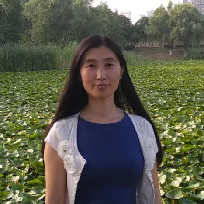

Welcome Prof. YanlingYu to be keynote speaker!

Dr.Yanling Yu, associate professor, deputy dean of Energy Chemical Engineering Department of School of Chemistry and Chemical Engineering, Harbin Institute of Technology(HIT). She works on renewable energy conversion and application,waste water treatment. Her research area focuses on fermentation heat production from lignocellulosee biomass and its application. She also including the application of biochar on water treatment, aerobic composting for heat recovery, screening of high-yield strain for cellulose degradation and micro-algae for flue gas cleaning and water purification. Up to now, she has published over 40 refereed articles in the journals, including Enviroment Science & Technology,Bioresource Technologyand Journal of Hazardous Materials, et al, andbeen invited and givenpresentations in the international conferences over 20 times. She was the principal investigator of 9 projects,including NFSC Project, and has participated over 10 research projects as key member.
Speech Title:Modified corncob-derived biochar: effective adsorbent for antibiotics and heavy metal
Abstract:
Antibioticsand heavy metal pollution in waterbody was a great potential risk to environment and health. Adsorption has an important position in polluted water treatment for its remarkable simplicity, excellent effiency and low energy consumption. The key factor of adsorption method is an efficient low-cost and environment-friendly adsorbent. Lignocellulose has the largest quantity among all renewable resources, which perfectly meet the requirement of raw materials of adsorbent contains reserve, accessibility and renewability. Stover, which is relevant with agricultural production, can obtain a product with excellent stability, large surface area and abundant pores through carbonization. These characteristics make stover suitable for adsorbent production, which is in favor of water pollution treatment and renewable resource application.
Biochar, as one kind of porous and carbon rich material, can be obtained by slow pyrolysis carbonization. Through purposeful activation and modification, the adsorption capacity of biochar can be obviously improved. Potassium hydroxide activation can make actived biochar with a surface area of over 3000 m2/g, and the sulfamethoxazole adsorbing capacity was 1429 mg/g. Further more, phosphoric acid activation and ammonia modification can improve the antibiotic removal ability effectively. Loading metallic oxide and hydroxide can achieve a higher heavy metal adsorption capacity. MgO/Mg(OH)2 modified biochar reached 1921mg/g on Pb(II) adsorbing and performed well on Cd(II) and Cu(II) removal. Further research confirmed that the CO2 enhanced the Pb(II) adsorbing and precipitate formation, which means that CO2 might be a key factor of treatment of lead contained waste water.
However, more time and attention should be concentrated on the treatment of low concentration antibiotics, industrial application of high efficient biochar based adsorbent and the improvement of market competitiveness of modified biochar, while we still have so many obstacles to overcome.
